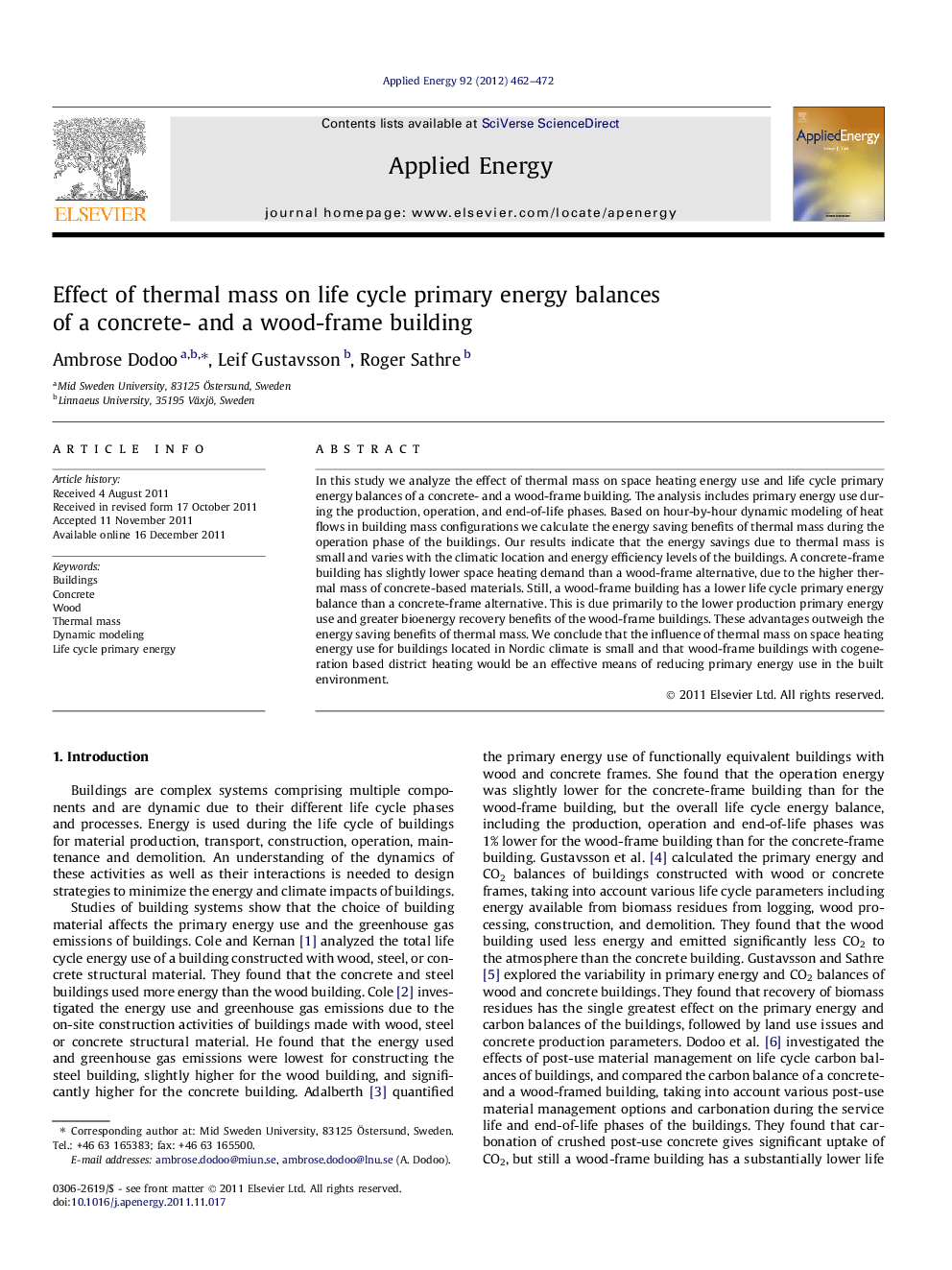| Article ID | Journal | Published Year | Pages | File Type |
|---|---|---|---|---|
| 243625 | Applied Energy | 2012 | 11 Pages |
In this study we analyze the effect of thermal mass on space heating energy use and life cycle primary energy balances of a concrete- and a wood-frame building. The analysis includes primary energy use during the production, operation, and end-of-life phases. Based on hour-by-hour dynamic modeling of heat flows in building mass configurations we calculate the energy saving benefits of thermal mass during the operation phase of the buildings. Our results indicate that the energy savings due to thermal mass is small and varies with the climatic location and energy efficiency levels of the buildings. A concrete-frame building has slightly lower space heating demand than a wood-frame alternative, due to the higher thermal mass of concrete-based materials. Still, a wood-frame building has a lower life cycle primary energy balance than a concrete-frame alternative. This is due primarily to the lower production primary energy use and greater bioenergy recovery benefits of the wood-frame buildings. These advantages outweigh the energy saving benefits of thermal mass. We conclude that the influence of thermal mass on space heating energy use for buildings located in Nordic climate is small and that wood-frame buildings with cogeneration based district heating would be an effective means of reducing primary energy use in the built environment.
► The effect of thermal mass on life cycle primary energy balance of concrete and wood building is analyzed. ► A concrete building has slightly lower space heating demand than a wood alternative. ► Still, a wood building has a lower life cycle primary energy use than a concrete alternative. ► The influence of thermal mass on space heating energy use for buildings in Nordic climate is small.
